Craving that iconic, restaurant-quality pasta dish with perfectly crispy shrimp and a dreamy cream sauce? You know the one. This Bistro Shrimp Pasta is a spot-on Cheesecake Factory copycat that brings all of that delicious indulgence right to your kitchen. The best part? It’s surprisingly simple to make.
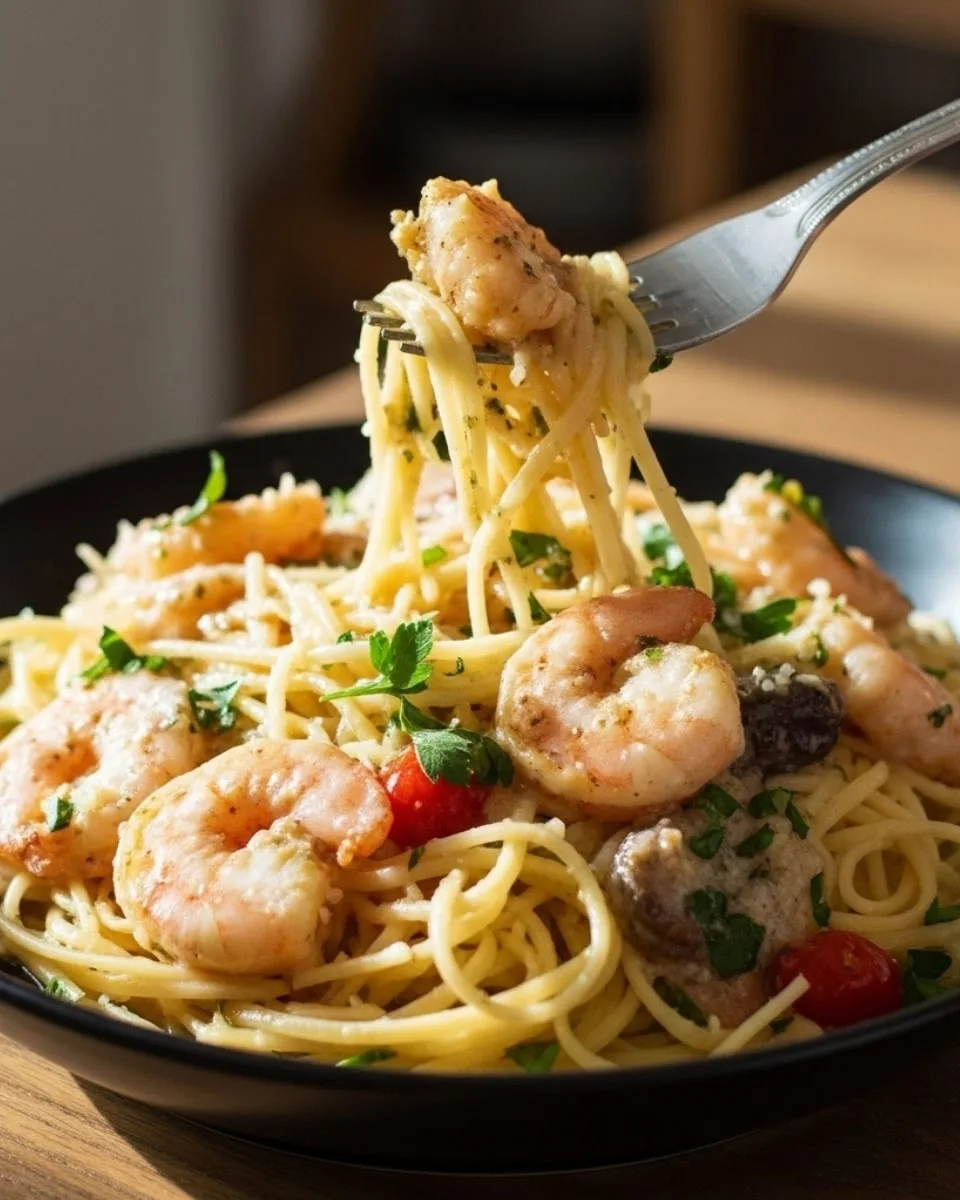
My secret is the light, crispy coating on the shrimp that stays crunchy even when tossed in the perfectly balanced lemon-basil cream sauce. I’ve broken down every step to make it easy for you to follow, so you can skip the restaurant lines and impress everyone right at home. Get ready to create the ultimate comfort meal that tastes just like the real thing
Table of Contents
Why You’ll Love This Recipe
This Bistro Shrimp Pasta isn’t just another copycat recipe. It’s an upgrade you can make right in your own kitchen! From the perfectly crispy shrimp to the luscious cream sauce, I’ve designed every element to deliver that restaurant-quality experience without any of the stress. Here is why this will become your new go-to pasta dish:
- Restaurant-Worthy Flavor, Simplified: I’ve streamlined the process to make it easy for anyone to follow, but I didn’t sacrifice any of the rich, complex flavor you expect from The Cheesecake Factory. You get all the indulgence with none of the hassle.
- Perfectly Crispy Shrimp Every Time: Say goodbye to soggy shrimp! My simple breading technique uses panko and seasonings to create a light and crispy coating. This guarantees a satisfying crunch that holds up beautifully, even when tossed in the creamy sauce.
- A Dreamy, Balanced Sauce: The secret to the sauce is all about balance. A combination of white wine, fresh lemon juice, and garlic cuts through the richness of the cream, creating a sauce that’s luscious and flavorful but won’t weigh you down.
- Ready in Under 40 Minutes: Believe it or not, this entire gourmet meal comes together faster than you can get a table on a Saturday night. It’s quick enough for a busy weeknight but feels special enough for a date night or weekend treat.
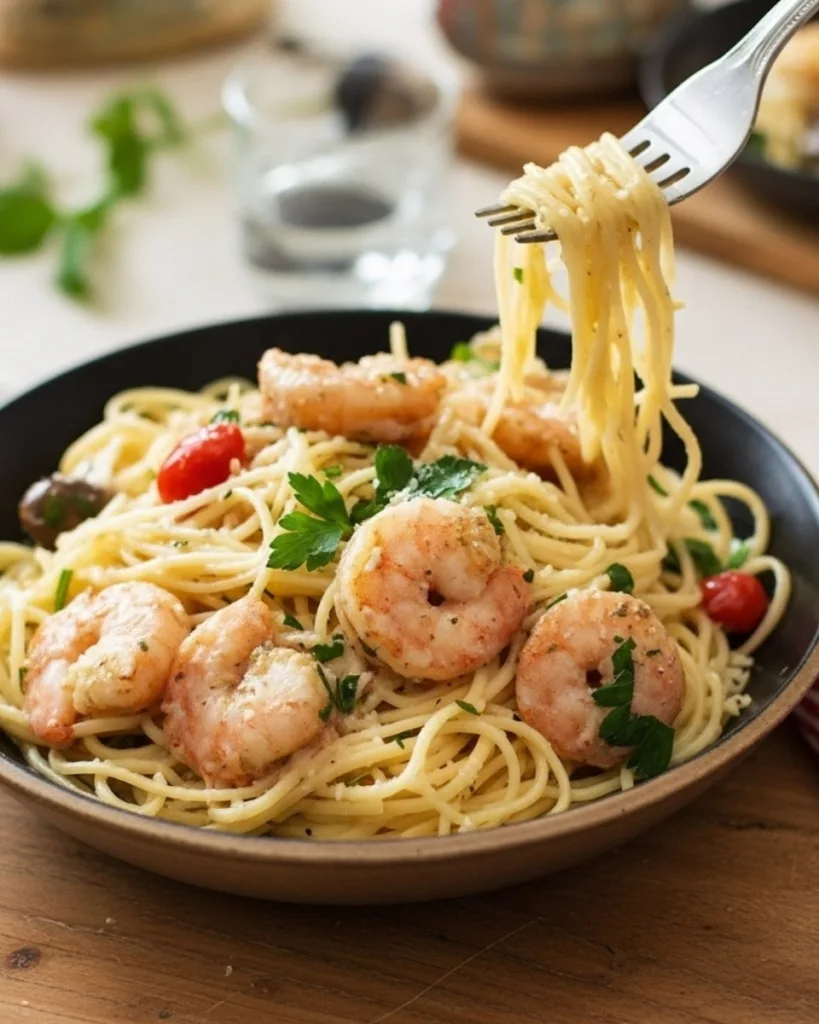
Ingredients You’ll Need
This recipe uses simple, fresh ingredients to build its incredible restaurant-quality flavor. While the list might look long, each component plays a key role in creating the perfect balance of crispy, creamy, and savory. Here’s everything you’ll need to make this delicious copycat dish.
For the Pasta and Shrimp
- Pasta: I recommend a thin pasta like spaghettini or angel hair, as it pairs beautifully with the delicate shrimp and creamy sauce. About 12 ounces is perfect.
- Shrimp: Use one pound of large or colossal shrimp, peeled and deveined. The larger size gives you a much more satisfying, juicy bite.
- For the Breading: A simple mix of flour, Panko breadcrumbs, egg, and seasonings is all you need. The Panko is essential for getting that signature light and crispy texture that won’t get soggy.
- Mushrooms & Tomatoes: Sliced cremini (or button) mushrooms and halved cherry or grape tomatoes add earthy depth and a burst of freshness to the dish.
- Arugula: Don’t skip this! A big handful of fresh, peppery arugula tossed in at the end adds a fresh, slightly bitter note that cuts through the richness beautifully.
For the Lemon-Basil Cream Sauce
- Fresh Basil: Julienne or chop fresh basil leaves to stir in at the end. It adds an irreplaceable fresh, aromatic flavor.
- Fat: A combination of butter and olive oil creates the perfect base for sautéing the aromatics and building a rich sauce.
- Aromatics: Freshly minced garlic is a must for building a flavorful foundation.
- White Wine: This is crucial for deglazing the pan and adding a layer of complexity. A dry white wine like Pinot Grigio or Sauvignon Blanc works best. If you prefer to skip the wine, you can use chicken broth instead.
- Heavy Cream: This gives the sauce its signature luxurious, creamy texture. Don’t substitute with milk, as it won’t be rich enough.
- Lemon Juice: Freshly squeezed lemon juice brightens everything up and keeps the cream sauce from feeling too heavy.
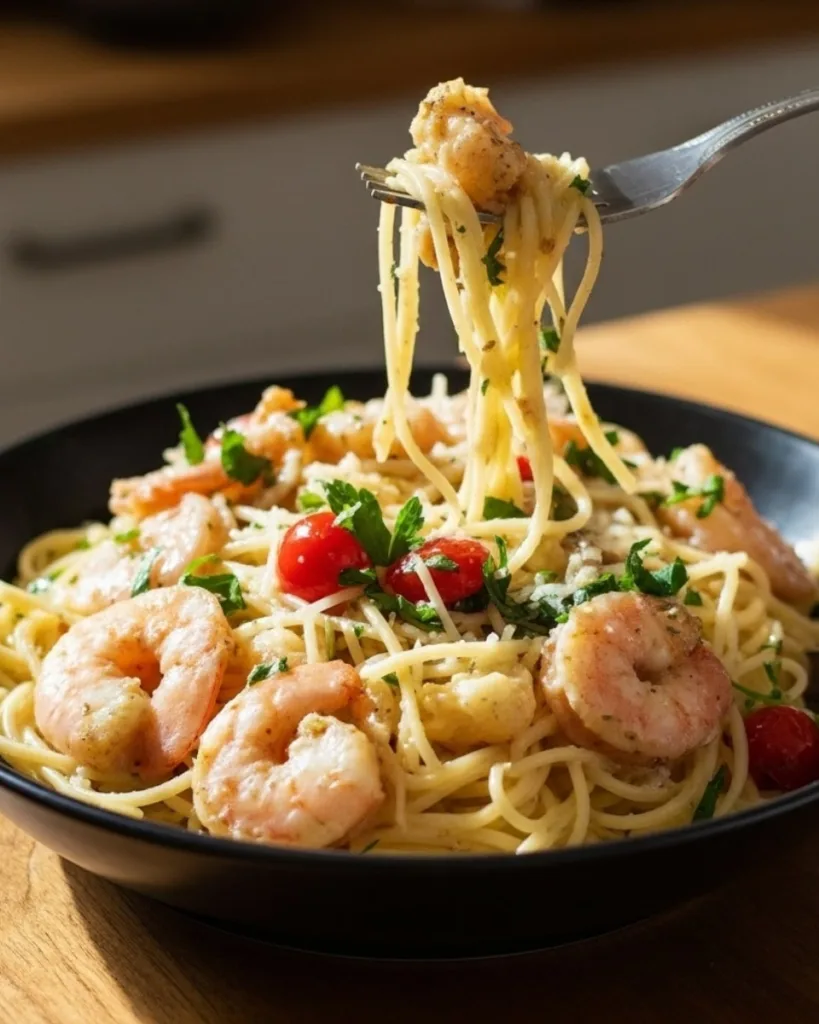
How to Make Bistro Shrimp Pasta (Step-by-Step)
This recipe comes together quickly, so I always recommend having all your ingredients prepped and ready to go before you start cooking. It makes the whole process smooth, fun, and totally stress-free!
- Prep First: Start by cooking your pasta according to the package directions until it’s perfectly al dente. While the pasta cooks, get your shrimp ready. Set up three shallow dishes: one with flour, one with a lightly beaten egg, and one with the Panko breadcrumbs and seasonings. Coat each shrimp first in flour, then dip it in the egg, and finally press it into the Panko mixture to get a nice, even coating.
- Cook the Crispy Breaded Shrimp: Heat a generous layer of oil in a large skillet over medium-high heat. Carefully place the breaded shrimp in the hot oil, making sure not to overcrowd the pan (work in batches if you need to). Cook for just 1-2 minutes per side. You’re looking for a beautiful golden-brown crust and for the shrimp to turn pink and opaque. Once cooked, transfer them to a paper towel-lined plate to drain.
- Build the Sauce: In the same skillet, sauté the mushrooms until they are nicely browned, then add the garlic and cook for another minute until it’s fragrant. Now for the best part: deglaze the pan by pouring in the white wine. Use a wooden spoon to scrape up all those delicious browned bits from the bottom of the pan. This is where so much flavor is hiding! Let the wine bubble and reduce by about half.
- Combine and Finish: Lower the heat and stir in the heavy cream and lemon juice, letting it simmer gently until the sauce thickens slightly. Now it’s time to bring it all together! Add the cooked pasta, tomatoes, and arugula to the skillet, tossing everything to coat in that creamy shrimp pasta sauce. Serve the pasta immediately, topped with the crispy shrimp and a sprinkle of fresh basil.
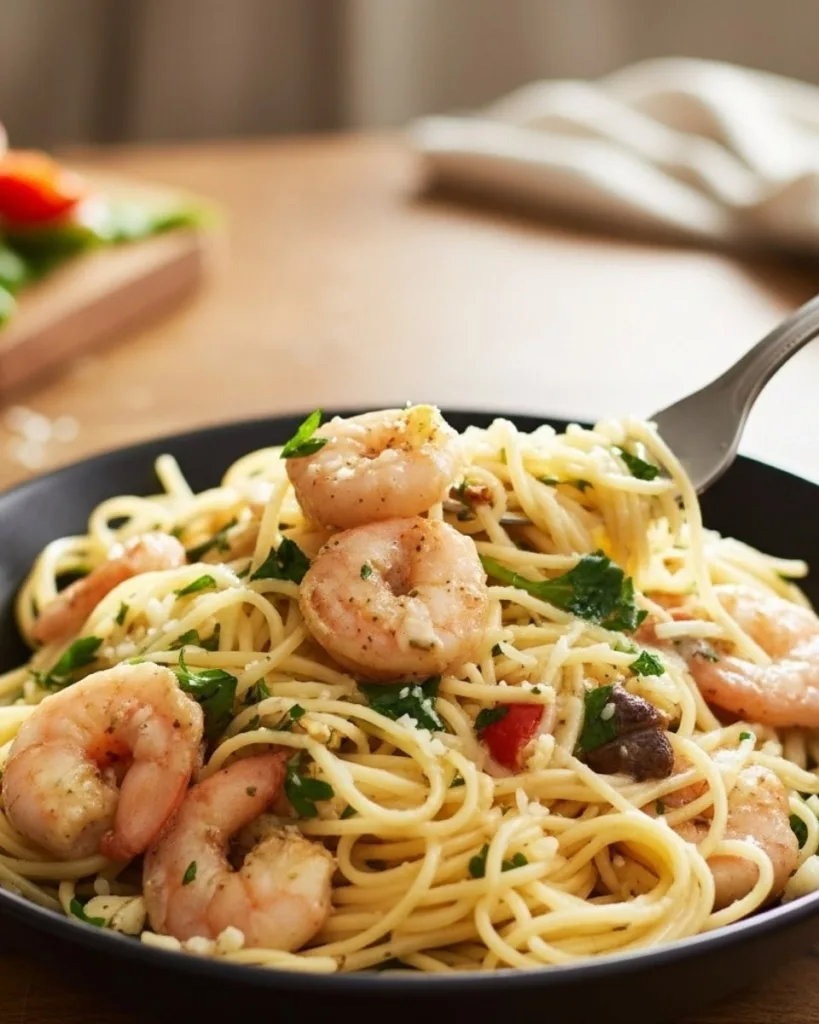
Pro-Tips for a Perfect Result
After making this dish countless times, I’ve picked up a few simple tricks that guarantee it turns out perfectly every single time. These small details make a huge difference in creating that truly restaurant-worthy result.
- Don’t Overcook the Shrimp: This is the golden rule! Shrimp cook incredibly fast, usually in just 1-2 minutes per side. You’ll know they’re done when their color changes from translucent gray to opaque pink, and they curl into a gentle “C” shape. If they curl into a tight “O,” they’re overcooked and will be rubbery. Remove them from the heat as soon as they turn pink.
- Reserve Your Pasta Water: Before you drain your pasta, save about a cup of the cooking water. This starchy water is liquid gold! If your cream sauce gets a little too thick, you can stir in a splash of pasta water to thin it out to the perfect consistency without diluting the flavor.
- Get a Great Sear: For the crispiest breaded shrimp, make sure your skillet is hot and your oil is shimmering before you add them. This allows the Panko crust to get golden brown and crunchy without the shrimp absorbing too much oil.
- Fresh is Always Best: While you can use dried herbs in a pinch, fresh ingredients make a world of difference here. Fresh garlic provides a much more robust flavor, and freshly squeezed lemon juice gives the sauce a bright, vibrant kick that bottled juice just can’t match.
Fun Variations to Try
One of the things I love most about this recipe is how easy it is to customize! Once you’ve mastered the basic dish, feel free to get creative and make it your own. Here are a few of my favorite fun variations to get you started:
- Make it Spicy: If you like a little heat, this dish is fantastic with an extra kick. Add a generous pinch of red pepper flakes to the sauce along with the garlic, or mix a bit of Cajun seasoning into the shrimp breading for a different flavor profile.
- Add More Veggies: This pasta is a great canvas for adding more greens. Try tossing in a large handful of fresh spinach with the arugula, or add blanched asparagus spears for a nice crunch. Sun-dried tomatoes are also a delicious, tangy addition.
- Swap the Protein: Not in the mood for shrimp? No problem! This creamy lemon and basil sauce works beautifully with other proteins. Try it with thinly sliced, crispy breaded chicken cutlets for an equally delicious meal.
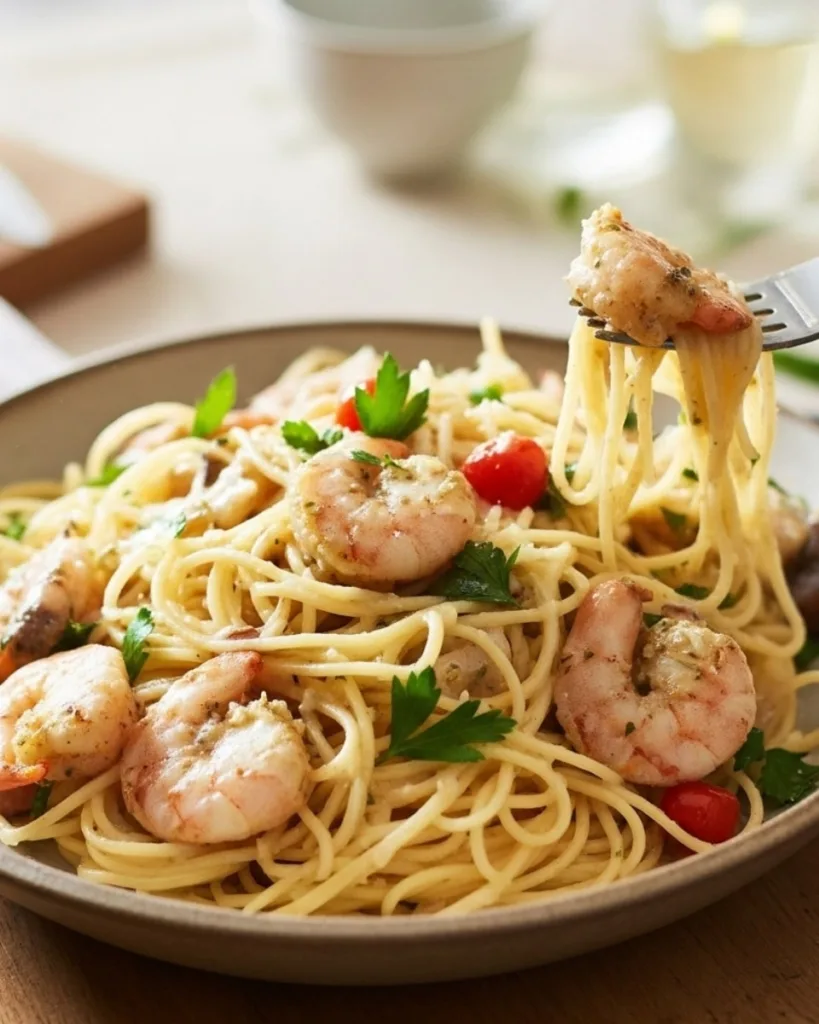
Serving and Storage Suggestions
This Bistro Shrimp Pasta is a complete meal on its own, but a few simple sides can take it over the top. When you’re ready to serve, I love pairing it with some warm, crusty garlic bread to soak up every last bit of that delicious lemon cream sauce. A simple green salad with a light vinaigrette also makes a perfect, refreshing contrast to the rich pasta.
If you have leftovers, they store beautifully!
- Storage: Let the pasta cool completely, then store it in an airtight container in the refrigerator for up to 3 days. I recommend storing the crispy shrimp separately if possible to help them stay crisp.
- Reheating: For the best results, gently reheat the pasta on the stovetop over low heat. Add a splash of milk, cream, or chicken broth to loosen the sauce and bring it back to its original creamy consistency. Try to avoid microwaving the shrimp, as it can make them rubbery. Instead, you can quickly refresh them in an air fryer or a hot pan for a minute or two.
Bistro Shrimp Pasta FAQs
Did Cheesecake Factory discontinue Bistro Shrimp Pasta?
Yes, unfortunately, The Cheesecake Factory discontinued the Bistro Shrimp Pasta in March 2025 as part of a larger menu update. While this beloved dish is no longer available in their restaurants, this copycat recipe allows you to enjoy all of its amazing flavors right at home!
What is Bistro Shrimp Pasta?
Bistro Shrimp Pasta is a restaurant-style dish known for its combination of textures and flavors. It typically features crispy, breaded shrimp served over spaghettini or a similar thin pasta. The pasta is tossed in a rich and creamy lemon-basil and garlic sauce, along with sautéed mushrooms, fresh tomatoes, and a handful of peppery arugula.
Is the Bistro Shrimp Pasta healthy?
The original restaurant version is known for being very indulgent and is high in calories, fat, and sodium, with some estimates putting a full serving at over 2,000 calories. This homemade version gives you much more control. You can make it lighter by using less oil for frying the shrimp (or using an air fryer), opting for half-and-half instead of heavy cream, and managing your portion size.
What sauce goes well with shrimp pasta?
Shrimp is incredibly versatile and pairs well with many sauces. Creamy sauces, especially those with garlic and lemon, are a classic choice as they complement the shrimp’s natural sweetness. Other great options include a simple garlic and butter sauce (scampi style), a fresh tomato-based marinara, or a vibrant pesto.
More Delicious Dinners to Try!
If you loved bringing this restaurant-favorite into your own kitchen, you’ll be excited to try these other amazing main courses. From more delicious pasta creations to other comforting meals, here are a few recipes from the blog that are sure to become new weeknight staples.
- Creamy Cajun Chicken Pasta
- Salsa Verde Chicken Pasta
- Philly Cheesesteak Pasta
- Italian Sausage with Bow Tie Pasta
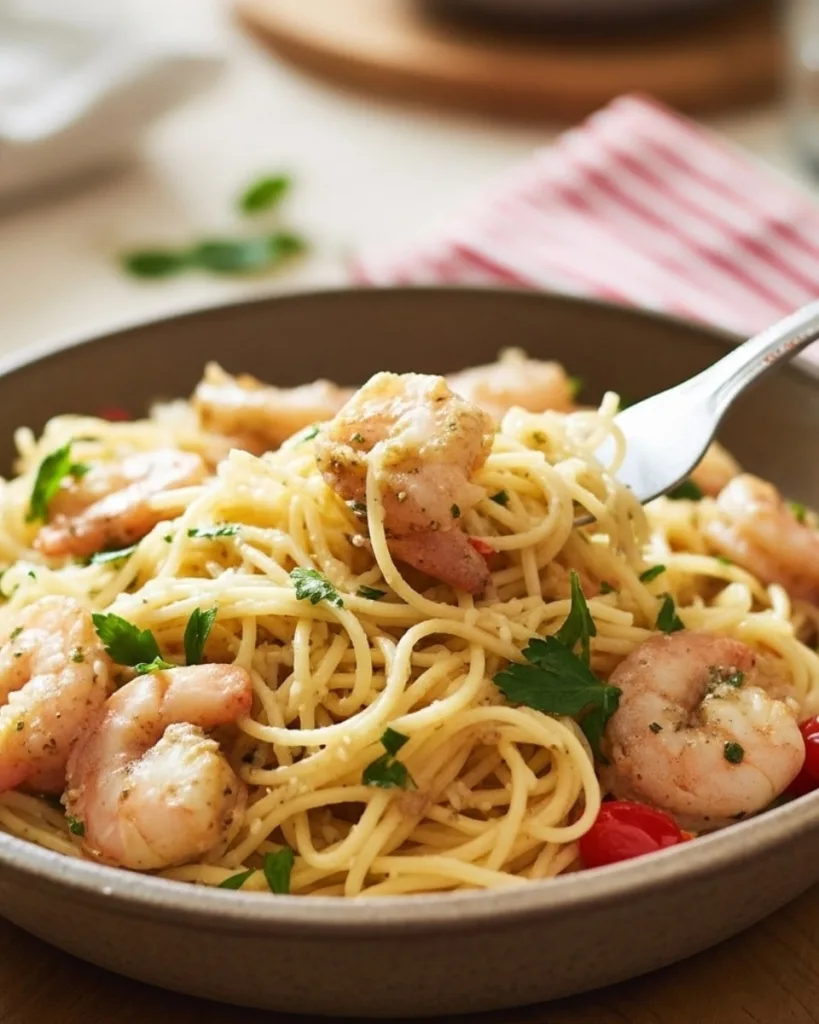
The Best Copycat Pasta You’ll Ever Make!
And that’s all it takes to bring the famous Cheesecake Factory Bistro Shrimp Pasta to your dinner table! With its perfectly crispy shrimp and luscious lemon-basil cream sauce, this recipe proves you can create a truly special meal any night of the week. I hope you love this indulgent dish as much as my family does.
If you make this recipe, I’d love to hear how it turned out! Please leave a comment below and don’t forget to follow me on Facebook, Instagram, and Pinterest for more delicious copycat recipes.
Print
Bistro Shrimp Pasta
- Total Time: 35 minutes
- Yield: 4 servings 1x
Description
Create a restaurant-quality meal right at home with this elegant Bistro Shrimp Pasta. Tender shrimp, perfectly cooked pasta, and a rich, creamy white wine garlic sauce come together in this quick yet luxurious dinner, perfect for weeknights or entertaining guests!
Ingredients
- 12 ounces linguine or fettuccine pasta
- 1 pound large shrimp, peeled and deveined
- Salt and freshly ground black pepper, to taste
- 2 tablespoons extra virgin olive oil
- 4 cloves garlic, minced
- 1/2 cup dry white wine (such as Pinot Grigio or Sauvignon Blanc)
- 1 cup heavy cream
- 1/2 cup freshly grated Parmesan cheese, plus more for serving
- 1 tablespoon unsalted butter
- Juice of 1 lemon
- 1/4 cup chopped fresh parsley
- 1 teaspoon red pepper flakes (optional, adjust to taste)
Instructions
- Cook the Pasta: Bring a large pot of salted water to a boil. Add pasta and cook until al dente. Reserve 1 cup of pasta water, then drain and set aside.
- Prepare the Shrimp: Pat shrimp dry and season with salt and pepper. In a large skillet, heat olive oil over medium-high heat. Add shrimp in a single layer and cook for 1–2 minutes per side, just until pink and opaque. Remove and set aside.
- Make the Sauce: Reduce heat to medium. Add minced garlic and sauté for 30 seconds until fragrant. Pour in white wine and scrape up any browned bits from the pan. Simmer for 2–3 minutes until reduced by half.
- Add the Cream: Stir in heavy cream, butter, and Parmesan cheese. Simmer gently until smooth and creamy. Add lemon juice and red pepper flakes (if using).
- Combine Everything: Return shrimp and pasta to the skillet. Toss until evenly coated. If sauce is too thick, add a splash of reserved pasta water until desired consistency.
- Finish and Serve: Stir in fresh parsley, taste, and adjust seasoning with salt and pepper. Serve immediately with extra Parmesan and lemon wedges.
Notes
Use a crisp, dry white wine such as Sauvignon Blanc for the best flavor. If avoiding alcohol, substitute with chicken broth. Avoid overcooking shrimp — they finish cooking gently in the sauce. For a colorful twist, add spinach, asparagus, or sun-dried tomatoes during the final step.
- Prep Time: 15 minutes
- Cook Time: 20 minutes
- Category: Dinner
- Method: Stovetop
- Cuisine: Italian-American
Nutrition
- Serving Size: 1 plate
- Calories: 650
- Sugar: 3g
- Sodium: 480mg
- Fat: 34g
- Saturated Fat: 17g
- Unsaturated Fat: 14g
- Trans Fat: 0g
- Carbohydrates: 55g
- Fiber: 2g
- Protein: 35g
- Cholesterol: 270mg
Keywords: shrimp pasta, creamy shrimp linguine, bistro shrimp pasta, garlic shrimp pasta




